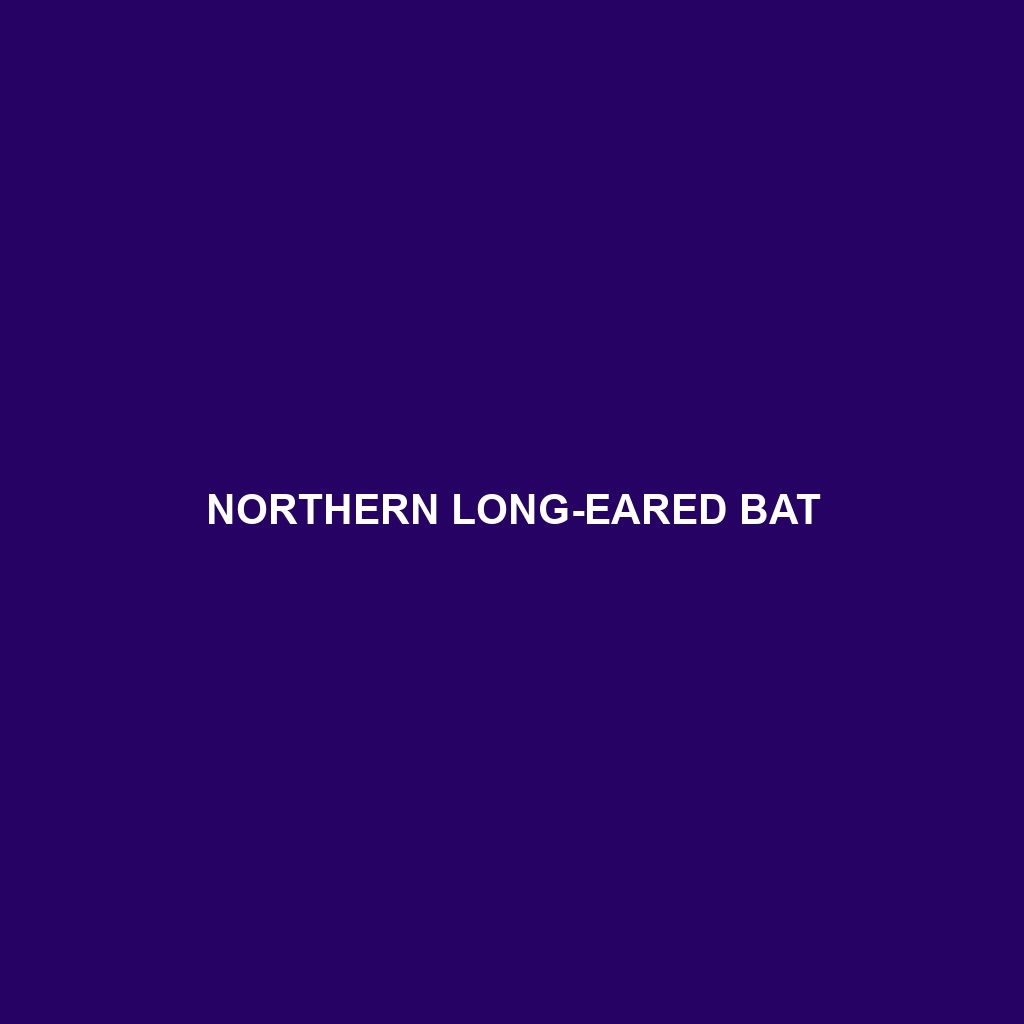Northern Long-eared Bat (Myotis septentrionalis)
Common Name: Northern Long-eared Bat
Scientific Name: Myotis septentrionalis
Habitat
The Northern Long-eared Bat is primarily found in the northern regions of North America, particularly in the northeastern United States and Canada. This species thrives in forested areas, favoring habitats with mature trees that provide ample roosting opportunities. During the summer months, these bats often utilize deciduous and mixed hardwood forests, whereas in winter, they are typically found in caves and abandoned mines where temperatures remain stable.
Physical Characteristics
This medium-sized bat has distinctive long ears that can measure up to 1.5 inches, contributing to its name. The Northern Long-eared Bat generally weighs between 6 to 10 grams and has a wingspan of approximately 9.5 to 10.5 inches. Its fur is soft and dense, usually exhibiting a brownish color with lighter underparts, aiding in camouflage against tree bark. One of its most notable features is the presence of a dark face and large ears, which are key identifiers for this species.
Behavior
Northern Long-eared Bats are primarily nocturnal, emerging at dusk to hunt for food. They are known for their agile flight and specialization in hunting moths and other flying insects. These bats utilize echolocation to navigate and find prey, making them efficient hunters. During the day, they roost in tree cavities and under loose tree bark, which is also where they congregate in small groups before heading out to forage for the night.
Diet
The diet of the Northern Long-eared Bat mainly consists of moths, beetles, and other flying insects, which they catch mid-air. This species plays a significant role in controlling insect populations, making them an integral part of their ecosystem. When feeding, they often hover and use their long ears to detect vibrations, helping them locate prey in complete darkness.
Reproduction
The breeding season for Northern Long-eared Bats typically occurs in the fall. However, fertilization is delayed until spring, resulting in pups being born in late June or early July. Females usually give birth to one pup per year, which is nursed for several weeks before becoming independent. This maternal care is crucial for the survival of the juvenile bats as they learn to hunt and fly.
Conservation Status
The Northern Long-eared Bat is currently listed as a threatened species, primarily due to the impact of White-nose Syndrome, a deadly fungal disease affecting bat populations across North America. Conservation efforts are ongoing to protect their habitats and mitigate the effects of disease and habitat degradation.
Interesting Facts
One fascinating aspect of the Northern Long-eared Bat is its ability to live in close proximity to urban environments, adapting to available roosting sites in parks and green spaces. Additionally, this species is known for its long lifespan, with some individuals living over 10 years in the wild.
Role in Ecosystem
The Northern Long-eared Bat plays a critical role in the ecosystem by controlling insect populations, thus benefiting agricultural practices and forest health. Their foraging activities help maintain a balance in the ecosystem, and their presence indicates a healthy environment. Furthermore, as prey for larger animals, they contribute to the food chain, connecting various species within their habitat.
